 One in 10 babies are born with tongue-tie, a condition which can prevent them from breastfeeding effectively. Just a quick snip can solve the problem, so why is tongue-tie still being under-diagnosed? The truth is that midwives carried scissors in their kitbags to deal with tongue-tie until the 1940s, at which point bottle-feeding became more common and offered a practical solution to breast-feeding problems. From that moment onwards, midwives would need to be specifically trained to perform a tongue division. Certainly, the advent of formula has a lot to answer for.
One in 10 babies are born with tongue-tie, a condition which can prevent them from breastfeeding effectively. Just a quick snip can solve the problem, so why is tongue-tie still being under-diagnosed? The truth is that midwives carried scissors in their kitbags to deal with tongue-tie until the 1940s, at which point bottle-feeding became more common and offered a practical solution to breast-feeding problems. From that moment onwards, midwives would need to be specifically trained to perform a tongue division. Certainly, the advent of formula has a lot to answer for.
In the story you are about to read, the baby was born with severe tongue-tie which made breastfeeding painful and inefficient. Yet rather than snip the tie, medical professionals pushed the mother to give formula. Fortunately for the baby, she had a quick witted and conscientious mom.
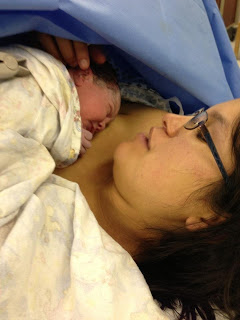
“By the third trimester of my pregnancy I had developed gestational diabetes and my baby was breech, so I was scheduled for a c-section. However my waters broke before the scheduled date and I ended with an emergency section. We had more or less immediate skin to skin (see photo), and then Robyn was cleaned and weighed and we resumed skin to skin in recovery. With help from a midwife, I positioned Robyn at the breast for the first time. She took a few sucks and then fell asleep.
Lethargic baby
For the first night in hospital, that’s how it went. As soon as the midwife put her in her cot, Robyn would wake and cry and root; the midwife would then hand her back to me only for Robyn to fall asleep after just a few sucks. Repeat ad infinitum.
The next day, each midwife would offer a hint or tip (strip baby off, position her this way, no that way, tickle her feet) but nothing would keep Robyn awake. They gave me a private room the second night (I think our antics had disturbed the other mums), yet that night was just the same, except now I had a midwife complain that I wasn’t mobile enough. I have an illness called Crohn’s disease, which means I was unable to take the usual painkillers. I therefore had to take a codeine based medication which wasn’t as effective.
The second day, we were discharged from hospital as the midwives were sure Robyn was just a sleepy baby and would get the hang of feeding soon enough. I was relieved. I had a grand total of 0 hours sleep over the two nights, and thought that once we were home I would have my partner’s support and could recover and get to know my baby in peace.
Baby losing weight
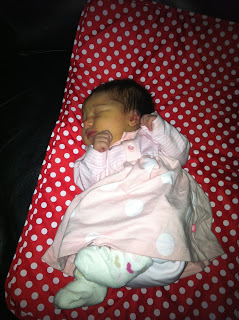
Day 3 and 4 arrived and so did our home midwife. On day 4, Robyn was weighed and had lost nearly 10% of her body weight, was jaundiced (see photo) and not producing any wet or dirty nappies. I knew some weight loss and jaundice was to be expected, however the midwife stressed that Robyn was at the limits of what could be considered normal, and if I didn’t feed my baby then she would be readmitted to hospital. I was terrified my baby would be taken from me and worried that if she went to hospital she would be given formula, we would be separated and we’d never get breastfeeding established.
Tongue-tie?
I spent a lot of time on Google while holding my sleeping baby. I stopped taking my painkillers in case they were having an effect. I tried pulling out my nipple for Robyn to latch onto. I tried stimulating my nipple by hand, using a breastpump, and a niplette style device. I tried lots of different positions and techniques. I came across an article online about posterior tongue tie and thought the pictures looked kind of like Robyn’s tongue, so I asked if there was any chance Robyn could have tongue tie. The midwife told me not to be so silly, and grabbed Robyn and pushed her onto the breast. Robyn screamed and that was the last time she came near my breast for days.
On the bottle
I began feeding her expressed milk first via syringe, then by cup and finally I resigned myself to the fact that my baby did not want my breast and began bottle feeding expressed milk.
On day 12, I went to my local peer support group. I felt such a failure and cried as I brought out Robyn’s bottle and fed her in front of the other mums. But they put me in touch with a support worker.
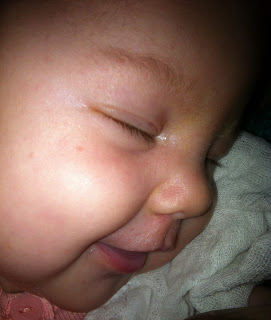
On day 13, the support worker came to see me. She managed to get Robyn to latch briefly, for the first time in 10 days! But alas, I couldn’t replicate it when left by myself.
I had another visit at day 15 and we made the decision to try nipple shields. Excitedly, I (well, my husband) rushed out to buy some. I put one on, brought Robyn to my breast, and she pulled it straight off, her latch was so poor it broke the suction – repeatedly. But then, I offered the other breast minus shield, and she fed! A full feed! On day 15 (coincidentally her due date) she had her first ever full breastfeed. I was beaming. It was if a lightbulb went on in her head.
Off the bottle
It took a little while, but I weaned her off bottles and fully onto the breast. This wasn’t actually as difficult as I feared. I did it by reducing the bottles gradually. Robyn was able to feed off my left side much easier, so I began offering the left breast on demand during the day, and would offer a bottle when she got frustrated or after a couple of less successful feeds. Gradually she was able to feed more off the breast and be satisfied so I didn’t need to offer a bottle. I then did the same on the right breast, and saved the night time bottle feeds till last as her feeding was much poorer when she was tired.
Unfortunately, by week 5 my nipples were so sore I couldn’t carry on any longer. Robyn was still poor at feeding – she made clicking noises and dribbled a lot of milk. I visited my doctor, and brought up the subject of tongue tie again. The doctor said that even if she did have tongue tie (which he didn’t think she did), it didn’t affect breastfeeding. He suggested it might be thrush, and said ‘if it hurts, don’t do it’. I went back to expressing and bottle feeding till my nipples healed, then we continued with at least one bottle feed a day to rest my nipples else I would be in agony.

Around this time I noticed Robyn’s top lip was very different to mine. When at the breast it stayed curled under, I tried gently flicking it out but it wouldn’t move. Intrigued, I looked more closely and found a piece of skin tethering her top lip to her gum. I brought it up at Robyn’s 6 week check and her doctor agreed to refer her to the hospital.
Tongue-tie assessment
When I arrived at the hospital, a nurse came to assess Robyn’s feeding and ask questions about her history. Then the surgeon came and put his gloved finger in her mouth to suck on. The two of them agreed that Robyn had a moderate tongue tie – which wasn’t even the problem I had been referred for!
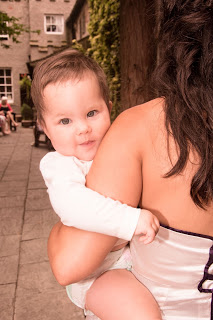
I cannot believe I went through 8 weeks of struggling to feed my baby before her problem was diagnosed – even though I raised concerns all those weeks before. Yet Robyn’s tongue tie was not snipped as they felt that she would grow out of it. Despite the hospital’s failure to snip, there was some improvement immediately after the hospital visit. I think the surgeon stretched the tie while examining her. Robyn stretched her tie even more herself when she started solid foods (she used to get food stuck in the roof of her mouth because her tongue wouldn’t lift).
Robyn was 13 weeks old before the pain during breastfeeding finally went (or was only fleeting). She’s now coming up to 11 months old and we’re still proudly breastfeeding! I don’t really understand why some moms wouldn’t at least give breastfeeding a go, it’s best for baby, best for mum, and it’s free.”
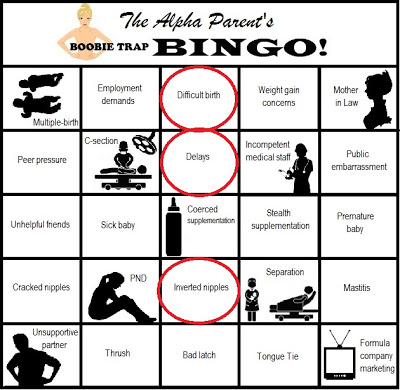
Get your own blank Bingo Card here.
Email me with your story to appear on Triumphant Tuesday!










